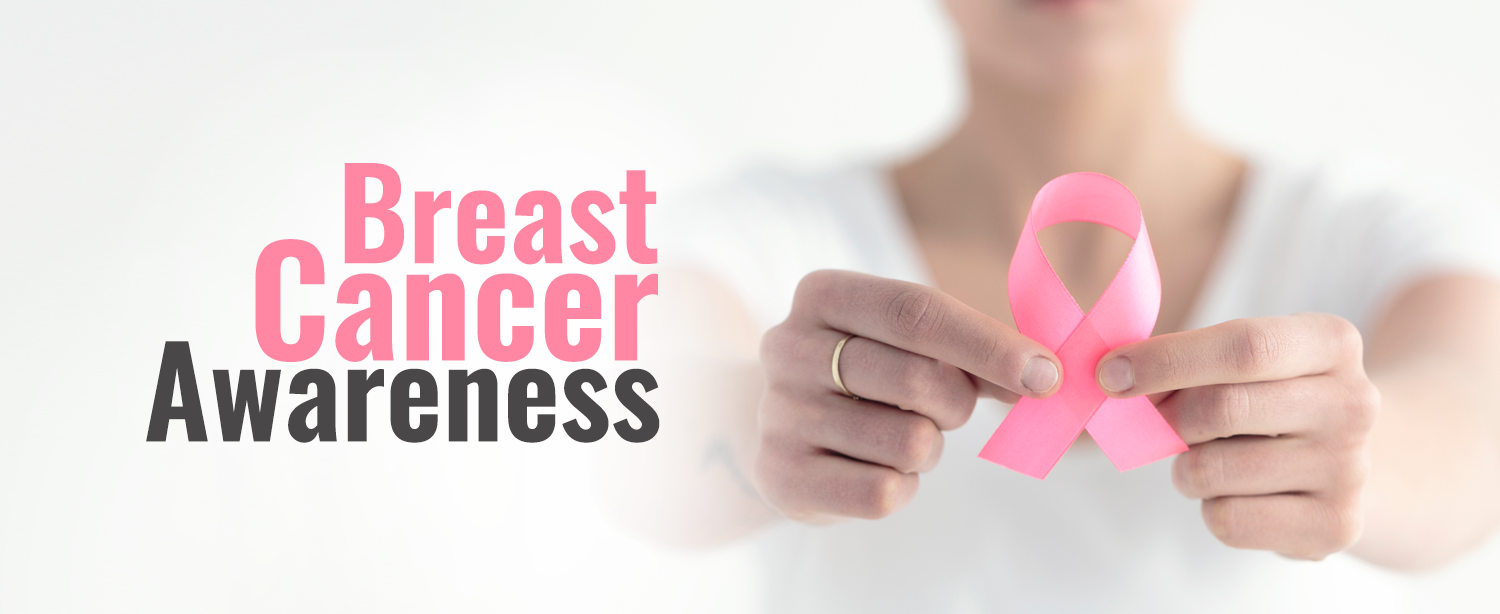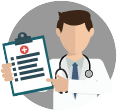Breast cancer starts when cells in the breast begin to grow out of control. These cells usually form a tumour that can often be seen on an x-ray or felt as a lump. The tumour is malignant (cancer) if the cells can grow into (invade) surrounding tissues or spread (metastasize) to distant areas of the body. Breast cancer occurs almost entirely in women, but men can get breast cancer, too.
Metastatic breast cancer is breast cancer that has spread beyond the breast and nearby lymph nodes to other organs in the body (most often the bones, lungs, liver or brain).
What are the risk factors for breast cancer?
The cause of breast cancer is still unknown, however the below factors can increase your risk of getting Breast Cancer:
1. Gender and age
The main risk factors for developing Breast Cancer are being a woman and getting older. More than 70 per cent of all breast cancers occur in women aged 50 years and over.
2. Previous history
Women who have previously had breast or ovarian cancer have an increased chance of developing breast cancer.
3. Family history
A woman’s risk of breast cancer is increased if one or more of her close relatives have been diagnosed with breast cancer. For example, if your mother or sister had breast cancer.
4. Being overweight
This is because body fat increases levels of the hormone oestrogen. Combining a balanced diet with regular exercise helps to maintain a healthy body weight.
5. Alcohol
Regularly drinking alcohol increases the risk of developing breast cancer. Limit your alcohol intake – if you don’t drink, don’t start. If you choose to drink, have no more than 2 standard drinks per day.
Reproductive and hormonal factors
- Menstruation and menopause – women who start their periods (menstruation) at a young age or who have menopause at a late age have an increased risk of breast cancer.
- Having children – the younger a woman is when she has children and the more children she has, the lower her risk of breast cancer.
- Breastfeeding – breastfeeding lowers the risk of developing breast cancer, probably because it reduces a woman’s total number of menstrual cycles. Breastfeeding for longer can also reduce a woman’s risk.
- Oral contraceptives – oral contraceptives (the Pill) cause a slight increase in breast cancer risk. However this risk gradually decreases after a woman stops taking them.
- Hormone replacement therapy (HRT) – women taking hormone replacement therapy (HRT) have an increased risk of developing breast cancer, particularly if they take the combined oestrogen/progesterone HRT.
Symptoms of Breast Cancer
In the early stages, Breast Cancer has no symptoms. As a tumour grows, you may notice these signs:
1. Lump in your breast or underarm.
A lump in your breast or underarm that doesn’t go away after your period. This is often the first symptom of breast cancer. Lumps associated with breast cancer are usually painless.
2. Swelling in the armpit, collarbone, or breast.
Swelling in your armpit or collarbone could mean breast cancer has spread to lymph nodes in that area. This swelling may come before you feel a lump, so let your doctor know if you notice it.
3. Pain or tenderness in your breast.
Although lumps are usually painless, pain or tenderness can be a sign of breast cancer.
4. A flat or indented area on your breast
This could be a tumour that you can’t see or feel.
5. Breast changes
You might notice a difference in the size, contour, texture, or temperature of your breast.
6. A change in your nipple
It could get dimpled, itch, burn, develop sores, pull inward or have a discharge.
Prevention
Treatments are getting better with each passing day and the awareness about this disease is also increasing. Here are a few ways to prevent Breast Cancer:
- Maintain an ideal body weight, prevent obesity.
- Being physically active for at least 30 minutes a day lowers your risk of Breast Cancer.
- Try to eat a lot of fruits and vegetables and keep alcohol at moderate levels.
- Quit smoking.
- Breastfeeding for a total of one year or more (combined for all children) lowers the risk of breast cancer.
Don’t Forget Screening
Regular Breast Cancer screening with mammography helps save lives. It helps detect cancer early when it’s most treatable. For most women, regular mammograms can begin at age 40, but specific recommendations vary by age and risk.
If you are age 40 – 44:
You can choose to begin yearly mammograms.
If you are age 45 – 54:
Mammograms are recommended every year.
If you are age 55 or over:
Mammograms are recommended every other year.
Breast Cancer Facts
- Men can also get breast cancer.
- A woman has about a one in eight chance of being diagnosed with breast cancer in her lifetime.
- Most women (about 8 out of 10) who get breast cancer do not have a family history of the disease
- But women who have close blood relatives with breast cancer have a higher risk.
- About 5 to 10 percent of breast cancers can be traced to specific, inherited gene mutations, such as the BRCA1 and BRCA2 gene mutations.
- Women often detect breast cancers themselves, so don’t underestimate the importance of a monthly breast self-exam.
Do you notice any unusual changes in your breast? Seek expert advice, meet our oncologists at our Comprehensive Breast Care Unit. Please find below link for the website:
https://www.kokilabenhospital.com/departments/clinicsatkh/breastclinic.html


